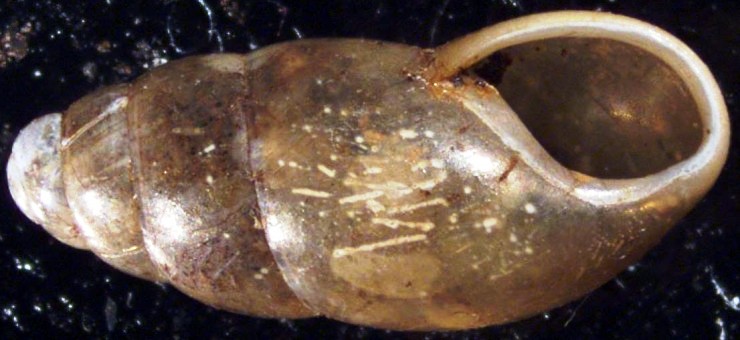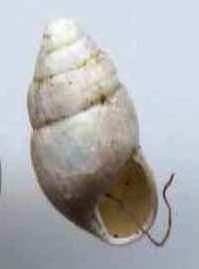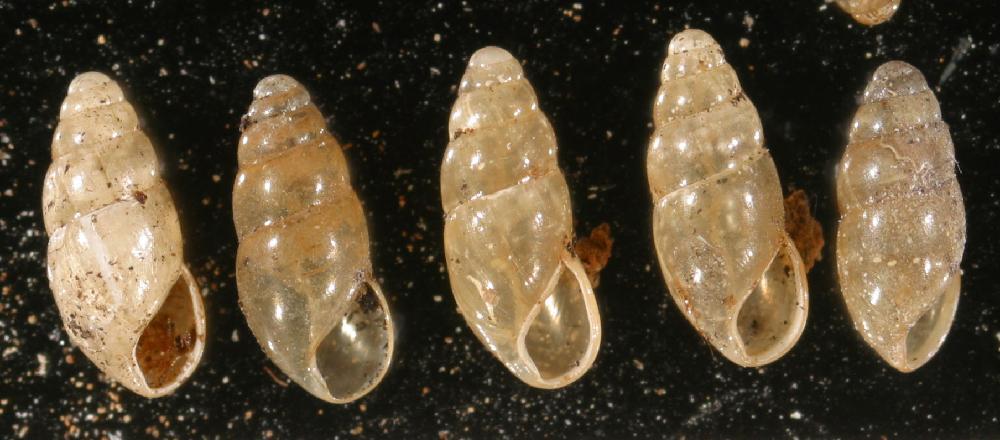Cochlicopa lubricella (Poro 1938)- Thin Pillar Snail
Classification

Domain-Eukarya
Kingdom-Animalia
Phylum- Mollusca
Class- Gastropoda
Subclass- Pulmonata
Order- Stylommatophora
Family- Cochlicopidae
Genus-Cochlicopa
Species-Cochlicopa lubricella
(Poro 1938)
(Encyclopedia of
life. 2001)
Looking at the classification of the Cochlicopa lubricella (Poro 1938), you may be overwhelmed and wonder how such a little creature has so many categories it fits under, but once you break it down it makes much more sense. All a classification really is, is a funnel. At the top you have a very wide range of animals that fit into the category and then as you get closer to the bottom less and less animals fit into the category until we reach one specific create. The Domain, Eukarya is our widest category it means that this creature has membrane bound organelles (and nucleus).(Nordsiek 2009) Next the Kingdom, Animalia means that it is multi-cellular, has true tissues, and they are heterotrophic. (Nordsiek 2009) Moving down our funnel next is the Phylum, Mullusca this creature being in this category allows us to conclude this animal is a soft bodied coelmoate, has a mantle cavity which houses gills or lungs and it secretes a shell, and it has a radula which is a rasping organ used for scraping , tearing or drilling into prey. (Nordsiek 2009) However to stop here would make no sense since there are so many species of Mollusca so to say we're talking about a Mollusca really means nothing. Next is the class, Gastropoda (Subclass, Pulmonata) which means that the mantle cavity has turned into a pulmonary sac, and there are no longer gills but lungs, and one creature has the organs for both female and male reproduction. (Nordsiek 2009) After Class is Order, Stylommatophora which means that the creature is a terrestrial snail or slug. (Nordsiek 2009) Finally we are nearing the bottom of our funnel with the Family, Chochlicopidae which means this snail has a pillar like shell. (Nordsiek 2009) Now we've reached the specific creature with the Genus and the Species, Cochlicopa lubricella (Poro 1938). (Nordsiek 2009) We can break down Cochlicopa lubricella (Poro 1938) into its Greek/Latin roots to figure out how this snail got its name. Cochlea- means snail shell, lubricus- means to be slippery and cell means to project or rise. (Bloom 2007) So the meaning of this snails name is "Slippery Snail Shell that Projects." This isn't very creative but it does make since. especially because the Cochlicopa lubricella (Poro 1938) is said to be larger then most of the snails in its family. It makes sense that it would have project in its name because it projects more then other species like Cochlicopa lubrica (Muller 1774). Lets find out how to identify the Cochlicopa lubricella (Poro 1938).

